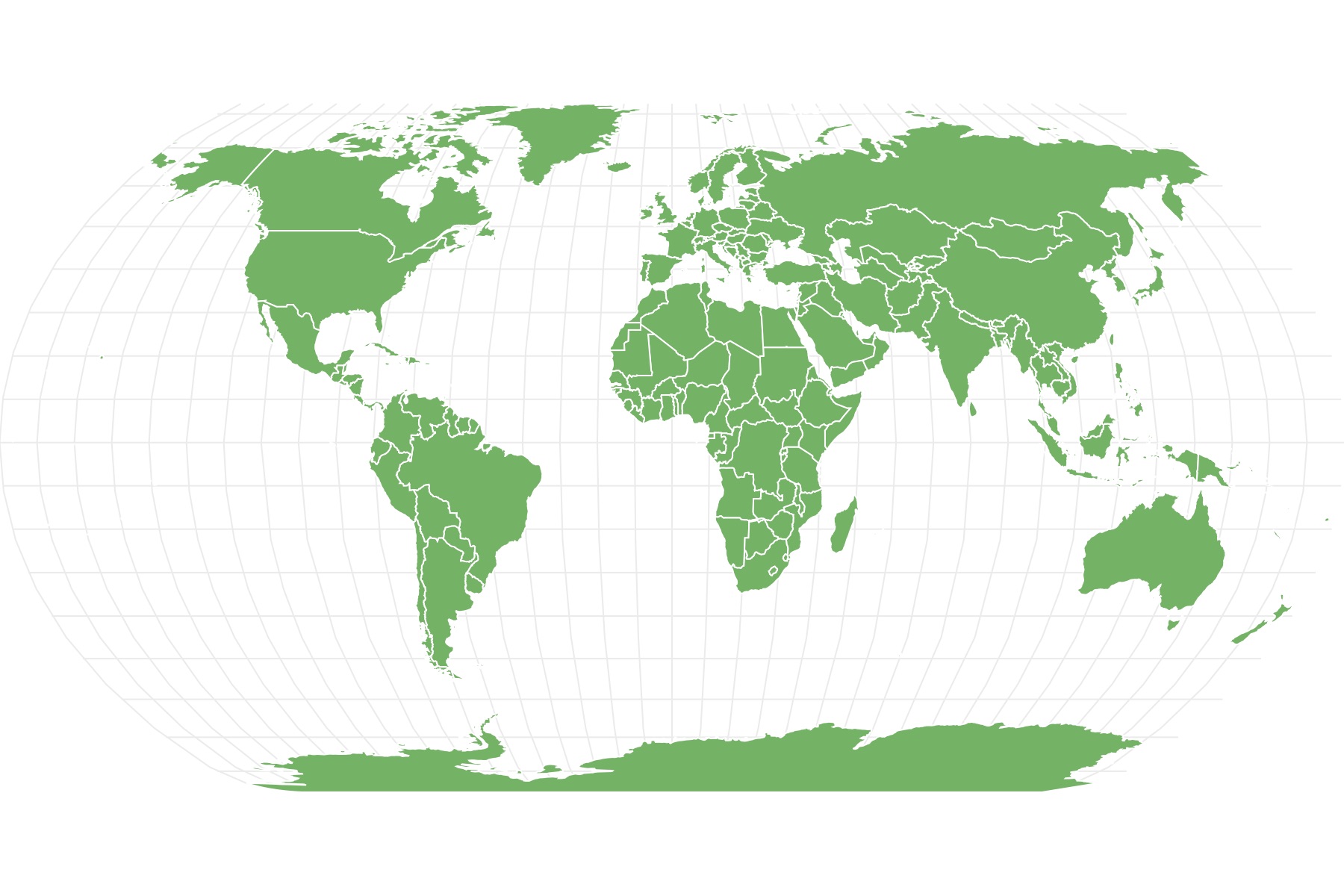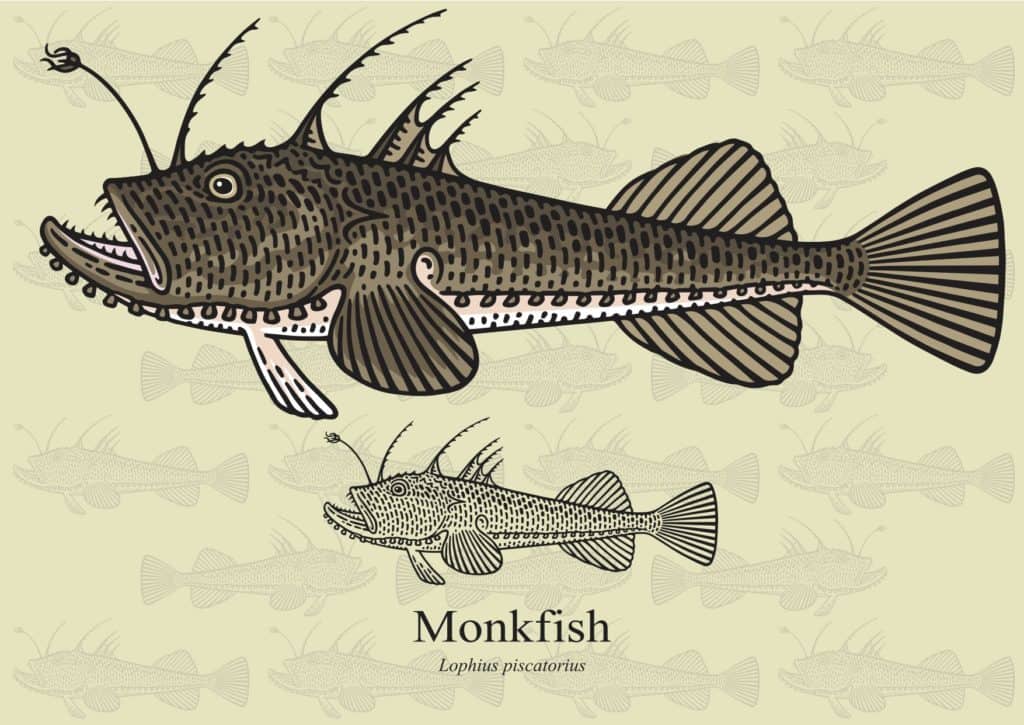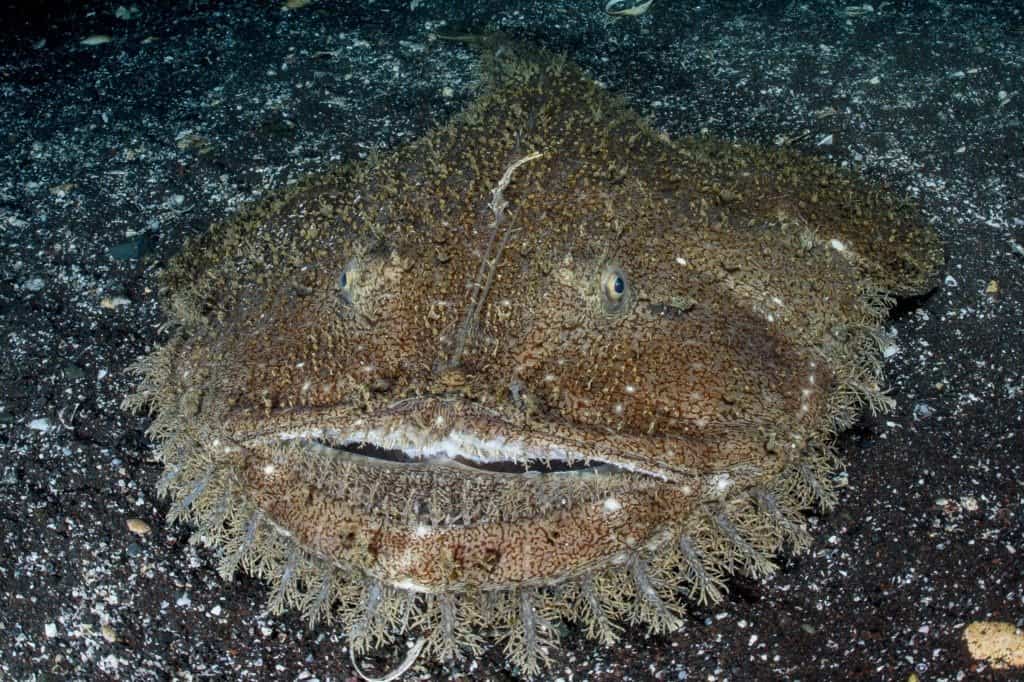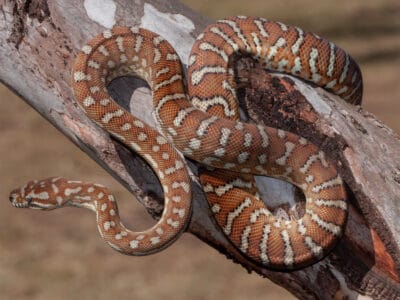Monkfish
.jumbotron {
background-image: url(“https://a-z-animals.com/media/monkfish-400×300.jpg”);
}
}
@media only screen and (min-width: 641px) and (max-width: 920px) {
.jumbotron {
background-image: url(“https://a-z-animals.com/media/monkfish-470×370.jpg”);
}
}
@media only screen and (min-width: 921px) {
.jumbotron {
background-image: url(“https://a-z-animals.com/media/monkfish.jpg”);
}
}
Monkfish
The poor man’s lobster!
Monkfish Scientific Classification

Monkfish Facts
- Prey
- Crustaceans, fish, seabirds, otters
- Main Prey
- Fish
- Fun Fact
- The poor man’s lobster!
- Biggest Threat
- Overfishing
- Most Distinctive Feature
- Large mouth and unique “lure” to attract prey
- Other Name(s)
- goosefish, angler, fishing frogs, Lotte
- Average Spawn Size
- 1 million
- Habitat
- Oceans. Generally found at 20 to 1,000 meter depths.
- Predators
- Sharks, swordfish, large skate species
- Diet
- Carnivore
- Number Of Species
- 7
- Slogan
- Called “The Poor Man’s Lobster!”
This post may contain affiliate links to our partners like Chewy, Amazon, and others. Purchasing through these helps us further the A-Z Animals mission to educate about the world’s species..

Spiders that fly! Fish that walk! And 1000+ more incredible animals. Discover them all for FREE
.photo-gallery {
–margin: 0px auto 0px;
–padding: 0px 0px 0px 0px;
}
.gallery-link {
background-image: url(“https://a-z-animals.com/media/monkfish-1024×817.jpg”);
background-repeat: no-repeat;
background-size: cover;
background-position: center;
height: 500px;
justify-content: center;
text-align: center;
align-items: center;
display: flex;
border: 2px solid #000;
}
.gallery-link img {
height: 50%;
}
@media only screen and (max-width: 768px) {
.gallery-link {
height: 300px !important;
}
}
View all of the Monkfish images!
Monkfish are part of the genus Lophius and are found along the coasts of the Atlantic Ocean and also in Asia.
Long a popular food staple in European cooking, the monkfish’s popularity has risen in other regions such as the United States and Japan. Its sweet, yet firm meat has been described as the “poor man’s lobster.” Monkfish is rated as “sustainably managed” in the United States, but populations face threats in other regions of the world.
Monkfish have one of the most unusual appearances in the animal kingdom, but are ferocious predators! They lay on the bottom of the ocean and ambush fish attracted to an antennae that’s used as bait. Once fish draw near, the monkfish strikes quickly and can swallow fish that are nearly its own size!
Monkfish Facts
- A fish for monks: It’s believed monks used to head down to fishing markets and ask for any unused fish. As monkfish have an unappealing look and were often caught as byproduct, fishmongers would give their monkfish to the church to eat.
- Hidden on the bottom of the sea: Like other bottom-dwelling predators, the monkfish relies on stealth. It blends in with the bottom of the ocean floor and then quickly strikes at prey that pass by. The monkfish can even adapt its color to better camouflage and blend in with its surroundings!
- A sustainably managed fishery: The NOAA touts monkfish as a “sustainably managed” fishery and raised their quotas for the species in 2018. Through 2020, the Federal government set a limit of 33.8 million pounds of monkfish caught annually.
- The “poor man’s lobster:” The flavor of monkfish has been compared to lobster, but it often costs a fraction the amount. This has led to monkfish being called “the poor man’s lobster.” The fish is a delicacy in many countries around the world, including Japan.
- Efficient predators that catch more than fish: Monkfish lay on the bottom of the sea and ambush prey. With an extremely wide mouth, inward facing teeth that trap prey, and an expandable stomach, they can eat fish roughly as large as they are! But scientists have discovered much more than fish inside the stomachs of monkfish. They’ve also found seabirds, ducks, and even otters.
Monkfish Scientific Name and Classification
The scientific name of the monkfish found off America’s Atlantic coast is Lophius Americanus.
Monkfish are part of the order Lophiiformes, or anglerfish. The order has 5 suborders, 17 families, 65 genera, and 300 species (Eschmeyer). The genus Lophius contains seven species with similar appearance that are spread across the world. While all these species are sometimes referred to as ‘monkfish,’ other common names include goosefish, fishing frogs, sea-devils, angler, all mouth, abbot, and Lotte.

The Fisherman/Shutterstock.com
Monkfish Species
Monkfish can be found across the world, but there are seven distinct species in the genius Lophius. The species of monkfish are:
- American angler (Lophius Americanus)
- Blackbellied angler (Lophius budegassa)
- Devil anglerfish (Lophius vomerinus)
- Yellow goosefish (Lophius litulon)
- Blackfin goosefish (Lophius gastrophysus)
- Shortspine African angler (Lophius vaillanti)
Each species of monkfish is described below.
| Geography | Scientific Name | Common Names | Description |
| Coastlines off America and Canada‘s Atlantic provinces | Lophius Americanus | American angler, goosefish | Lives at depths from 0 to 800 meters. Maximum recorded length of 47.2 inches (120 cm) and weight of 49.8 pounds (22.6 kilograms). |
| Coast of Morocco into the Mediterranean and the North Sea | Lophius budegassa | Blackbellied angler | Discovered at depths exceeding 1,000 meters. Reaches about 39 inches (100 cm) at maximum length. |
| From Namibia to South Africa’s Indian Ocean border | Lophius vomerinus | Devil anglerfish | Found mostly at a depth of 150 to 400 meters, the devil anglerfish is considered Near Threatened by the IUCN. |
| Coast of Africa from Senegal to Angola | Lophius vaillanti | Shortspine African angler | Maximum reported length of 31.6 inches (80.3 cm). |
| Waters surrounding Europe with a more northerly spread than the blackbellied angler | Lophius piscatorious | Angler | The largest species of monkfish, reaching 78.7 inches (200 cm) and weighing up to 127 pounds (57.7 kg). |
| Coastlines of China to Japan and Korea | Lophius litulon | Yellow goosefish | Reaches depths of 560 meters. Specimens have reached five feet (150 cm) in length. A popular high-end dish in Japan. |
| Mostly found in Caribbean waters down to Brazil | Lophius gastrophysus | Blackfin goosefish | Typically found at depths to 180 meters, but can reach 700. Maximum length of about two feet (60 cm). |
Monkfish Appearance
Monkfish have an extremely unique appearance. Possessing extremely wide mouths and flattened bodies, as a member of the anglerfish order, monkfish have evolved so the spines on their dorsal fin function as “lures.”
Monkfish can move this spine in any direction, and a small fleshy piece on top helps move prey into an area where they can quickly strike. These bottom-dwelling fish are brown in color, but have marbling that helps them blend in with the bottom of the seafloor.
Monkfish species grow to various sizes, with the angler reaching up to 127 pounds and 78.8 inches. Species in more temperate areas, such as the blackfin goosefish, are smaller and reach maximum sizes of roughly two feet in length.

Monkfish Distribution, Population, and Habitat
Monkfish are found on continental shelves, generally in waters between 20 to 1,000 meters. Species of monkfish can be found off the Atlantic coasts of both North and South America, Europe, Africa‘s Atlantic coast, and from China to Japan in the Pacific.
The NOAA’s most recent assessment of monkfish (American angler) biomass stands at about 197,280 metric tons. The species has been classified as not overfished and quotas have actually been raised to encourage more fishing of monkfish as its fishery has been sustainably managed. However, the devil anglerfish — which lives off the coast of South Africa and Namibia — has been classified as Near Threatened by the IUCN.
Monkfish live in sand and sediment on the bottoms of oceans. Throughout the year their habitats will change as they migrate to spawn and find new food sources. Although monkfish are the highly-valued fish in the Northeastern United States, there is still little known about their migratory patterns. A 2018 survey hypothesized monkfish migrated to deeper water during the summer to avoid warmer water temperatures.
Monkfish Predators and Prey
Monkfish hunt by laying near the ocean floor similar to other bottom-dwelling fish like fluke fish. However, anglerfish have a unique adaptation: an antennae on top their head that’s moved to attract fish who are drawn to this “bait.” This technique allows the monkfish to use incredibly little energy as it simply waits for prey to come to it. Once prey is near, the monkfish strikes with lightning-fast speed and has a wide mouth that allows it to catch larger fish species. Its stomach can also stretch to accommodate larger prey that can exceed 50 pounds of weight!
The primary prey of monkfish changes with age. As larvae they eat plankton, while juveniles feed on crustaceans and small fish. Once fully grown, monkfish feed on predominately on larger fish. However, monkfish have been discovered with seabirds and even sea otters in their stomachs!
As monkfish grow older they face few predators, however sharks and even skate fish will prey on monkfish when provided the opportunity.
Monkfish Cooking & Fishing
Monkfish is an important fishery in both the United States and Europe. While there’s limited recreational fishing of the species, government agencies manage quotas. In recent years, the U.S. limit for monkfish has been raised to encourage fishermen to catch more of the species, as its stocks appear to be well-managed. The fish is caught through both trawling and gillnet gear.

Monkfish has long been a staple in French cuisine, but has seen increased popularity in America. While monkfish have large heads, its the tail (and liver) that is edible and sold at fish markets. Tails on monkfish generally weigh between one and four pounds of dense meat lacking any bones.
Poor Man’s Lobster
The meat of monkfish is often compared to lobster because it has a slightly sweet character and a similar firm texture. However, monkfish often costs much less than lobster. At Northeastern fish markets, monkfish tails will often cost $7 per pound vs. $10 or more for lobsters. This has led to monkfish being called “the poor man’s lobster.”
Many recipes call for monkfish to replace lobster. The dish is typically baked and then has added ingredients such as butter and lemon to provide additional flavor to the dish.
Monkfish is adaptable and is also used in a variety of soups and other preparations.
View all 114 animals that start with M
Monkfish FAQs (Frequently Asked Questions)
What do monkfish taste like?
Monkfish have a slightly sweet taste and their tales possess dense meat. Both these qualities are similar to lobster and have led to monkfish being known as “the poor man’s lobster.”
What is a monkfish?
Monkfish are bottom-dwelling fish that are part of the anglerfish order. They have large mouths and flat bodies and rely on using a “lure” on the top of their head to ambush prey. Monkfish generally live at depths between 20 and 1,000 meters and are prized for the meat on their tails which is comparable in taste and texture to a lobster.
What do monkfish smell like
While monkfish are often called sea devils for their ‘monster-like’ appearance, they lack any unique smell. Their smell should be similar to other animals from the ocean. If a monkfish has a sour or especially pungent odor, the meat is likely expiring.
What kind of nutrition does monkfish have?
Per 100 gram serving monkfish has 76 calories. 18% of their calories are fat while the remainder is protein. The species has low saturated fat, measured at .3 grams per serving.
Where to catch monkfish
Monkfish are mostly fished by commercial vessels. The species tends to be in deeper environments where trawling or gillnets catch species like monkfish that reside near the bottom of the ocean. However, monkfish are sometimes seen near coastal waters. The species tends to migrate out into deeper waters during the summer when recreational fishing is most popular.
Are Monkfish herbivores, carnivores, or omnivores?
Monkfish are Carnivores, meaning they eat other animals.
What Kingdom do Monkfish belong to?
Monkfish belong to the Kingdom Animalia.
What is another name for the Monkfish?
The Monkfish is also called the goosefish, angler, fishing frogs, or Lotte .
Sources
- Seafood Source, Available here: https://www.seafoodsource.com/seafood-handbook/finfish/monkfish
- Liese A. Siemann , Carl J. Huntsberger, Jasper S. Leavitt, Ronald J. Smolowitz, Available here: https://journals.plos.org/plosone/article?id=10.1371/journal.pone.0206829
- Seafood from Norway, Available here: https://fromnorway.com/seafood-from-norway/monkfish/
- Washington Post, Available here: https://www.washingtonpost.com/national/energy-environment/ugly-delicacy-industry-touts-weird-looking-monkfish/2018/03/01/2741289e-1d79-11e8-98f5-ceecfa8741b6_story.html
- Fishbase, Available here: https://www.fishbase.in/summary/Lophius-piscatorius.html















